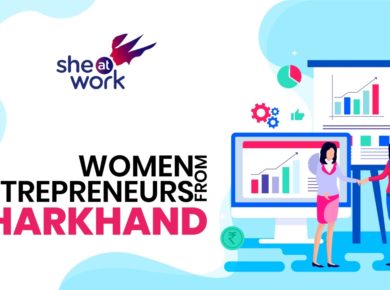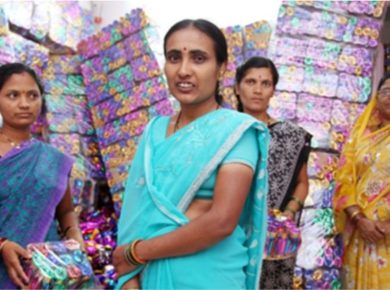A new report by Bain & Company and Google, published on February 18th, states that women entrepreneurship can create an extremely transformational impact on employment in India. According to it, women entrepreneurship can create as many as 150-170 million jobs in the country, exceeding the number of new jobs required for its total working population by 2030, by over 25%.
Titled “Women Entrepreneurship in India – Powering the economy with her”, the report highlights the urgent need for focused efforts on enhancing women entrepreneurship in India, both in quantity as well as quality, in order to combat the many existing employment challenges in the country.
The report has identified six unique segments of women entrepreneurs in the country, and estimates a total of 13.5–15.7 million women-owned enterprises in existence. This makes up roughly 20% of all enterprises in India, today. However, women are also often named as proprietors and owners, for tax, financial, and administrative purposes, with little to no actual role in the organisation.
It found that the majority of women-owned enterprises are single person ventures, with the largest segment, accounting for 38% of all ventures, made up of rural non-farm home-based business owners. The second biggest segment, at 31%, is made up of urban self-employed women entrepreneurs, who mostly work from home.
The third segment, at 18%, represents rural farm-based entrepreneurs, while the fourth is small business owners, at 14%, made up of urban entrepreneurs (6%) and rural entrepreneurs (8%), who have less than 10 employees, despite having the largest contribution towards employment generation.
The last segment is named the scalers, who are entrepreneurs employing over 10 people, making up less than 1% of the survey. However, when put together, all of these women entrepreneurs directly employ roughly 22 to 27 million people, today.
As such, the report also draws attention to the vast opportunities available to boost both the quantity and quality of entrepreneurship, thereby creating more than 30 million women-owned enterprises, 12 million of whom can generate massive employment opportunities for the country.
Megha Chawla, partner at Bain & Company and the lead author of the report, said, “In spite of India’s economic progress in the last decade, women’s participation in the labour force has declined and is expected to be under pressure due to labour trends, technological disruption and constraining social barriers. Unlocking entrepreneurship amongst women in India is a complex effort, but it provides an unprecedented opportunity to change the economic and social trajectory of India and its women for generations to come. This will drive tremendous job creation and also deliver transformational social and personal outcomes for women.”
Sapna Chadha, senior country marketing director for Google India and Southeast Asia, Google, said, “At Google we have been investing in scaled skilling efforts across SMBs, Startups and overcoming the digital gender gap in the country through the Internet Saathi program.”
The report also laid emphasis on four critical opportunity areas for enhancing women entrepreneurship in India, including creating a level playing field for impactful, employment-generating entrepreneurs, encouraging more women to take up entrepreneurship, and developing, strengthening, and scaling up productive rural agripreneurs.
Rajan, Partner at Bain & Company, as well as a co-author of the report, said, “Implementing these interventions to accelerate prospective and current women entrepreneurs will need a deep recognition of the urgency, and a multi-year coordinated scaled effort between various ecosystem participants. These include national and state governments, grass-root organisations, investment and banking communities, other private enterprises, educational institutions and the media. This report is a start and is the compass needed to consolidate and coordinate efforts across high impact areas.”










